What Kind of Paper is Rolling Paper? 🔥 The Complete Guide You Actually Need

Everything you need to know about rolling paper materials, safety, quality, and choosing the perfect option for your lifestyle ✨
📋 Table of Contents
- 🌿 What Is Rolling Paper Made From?
- 📝 Types of Rolling Paper Materials
- 🛡️ Is Rolling Paper Safe?
- ⭐ What Makes Quality Rolling Paper?
- 🎯 How to Choose the Right Rolling Paper
- ❌ Common Mistakes When Choosing Papers
- 💾 How to Store Rolling Papers Properly
- 🔍 Rolling Paper Myths Debunked
- 🌟 Why Our Rolling Papers Stand Out
- ❓ Frequently Asked Questions
Ever wondered what's actually in those thin sheets you roll with? 🤔 You're definitely not alone! The question "what kind of paper is rolling paper" pops up constantly, and for good reason. Not all papers are created equal, and understanding what you're using can make a huge difference in your experience.
Here's the thing: rolling papers aren't just regular paper that happens to be thin. They're specially manufactured from specific natural plant fibers, designed to burn evenly, taste clean, and provide a smooth experience. The material, thickness, and manufacturing process all play crucial roles in how your papers perform.
In this comprehensive guide, we're breaking down everything you need to know about rolling paper materials, safety considerations, quality factors, and how to choose the perfect option for your needs. Whether you're a complete beginner or a seasoned pro looking to level up your game, you'll find valuable insights here! ✨
🌿 What Is Rolling Paper Made From?
At its core, rolling paper is made from natural plant fibers that have been processed into ultra-thin sheets. Unlike regular paper (which you should NEVER use as a substitute, more on that later!), rolling papers are specifically engineered for burning safely and evenly.
The most common base materials include hemp fibers, rice, flax, wood pulp, and esparto grass. Each material brings its own unique characteristics to the table. Think of it like choosing between cotton and polyester for clothing – both work, but they feel different, perform differently, and suit different preferences! 👕
The Manufacturing Magic ✨
Here's where it gets interesting! The base fibers undergo a specialized manufacturing process that includes pulping the plant material into tiny fibers, refining to achieve the desired thickness (we're talking 10-28 grams per square meter – that's crazy thin!), adding natural additives to control burn rate and ash color, applying a thin adhesive strip (usually natural gum arabic), and cutting into precise sizes.
The goal? Creating a paper that burns consistently, doesn't overpower the flavor of your herbs, holds together during rolling, and produces clean, white or light gray ash. It's way more complex than you might think! 🔬
What Makes Them Different from Regular Paper? 🤷
This is crucial to understand! Regular paper contains harmful chemicals, bleaches, and inks, is too thick and burns unevenly, lacks proper adhesive strips, releases toxic fumes when burned, and often contains wood fibers treated with chemicals you definitely don't want inhaling.
Pro tip: If someone ever suggests using notebook paper, printer paper, or magazine pages as a substitute – hard pass! 🚫 These papers are chemically treated and can release seriously nasty stuff when burned. Always stick with proper rolling papers designed specifically for the job.
📝 Types of Rolling Paper Materials Explained
Let's dive deep into each material type so you can make an informed decision. Each has its own vibe, burn characteristics, and ideal use cases! 🌟
🌱 Hemp Rolling Papers – The Eco-Friendly Champion
Hemp papers are like the reliable friend who's always got your back. Made from industrial hemp fibers, these papers have exploded in popularity over the past decade, and for good reason!
Why Hemp Papers Rock 🎸
Hemp is one of the fastest-growing plants on Earth, reaching maturity in just 3-4 months. It requires minimal water, zero pesticides, and actually improves soil health. That's some serious eco-cred right there! 🌍
Characteristics: Moderate thickness (not too thin, not too thick), natural light brown or tan color when unbleached, slightly textured surface that's easy to grip, mild earthy flavor that doesn't overpower, burns at a medium pace – not too fast, not too slow.
Best for: Beginners who want something forgiving to roll, eco-conscious folks who care about sustainability, everyday users who need reliability, anyone who wants a balance of taste and ease of use.
Real talk: Hemp papers are probably the most versatile option out there. They're durable enough for newbies to practice with, but refined enough that experienced rollers love them too. Plus, knowing you're supporting sustainable agriculture just feels good! 💚
🍚 Rice Rolling Papers – The Purist's Choice
Rice papers are the minimalists of the rolling paper world. If you want the cleanest, most flavorless experience possible, rice is calling your name!
The Rice Paper Experience 🎭
Made from processed rice straw or rice flour, these papers are almost translucent when you hold them up to light. They're so thin they're sometimes called "see-through" papers, and that thinness is exactly what makes them special.
Characteristics: Ultra-thin and nearly transparent, burns very slowly due to low material volume, virtually tasteless – lets your herbs shine, delicate texture that requires careful handling, produces minimal ash, sticky gum that adheres well when moistened.
Best for: Experienced rollers with steady hands, flavor purists who want zero paper taste, patient users who prefer slower sessions, people in dry climates (they get tricky when humid!).
Heads up: Rice papers can be frustrating at first! They tear easily if you're heavy-handed, and humidity is their kryptonite. But once you master them? Chef's kiss! 👨🍳 They offer the cleanest burn and purest taste you'll find.
🌳 Wood Pulp Rolling Papers – The Classic Standard
Wood pulp papers are the OGs – they've been around forever and remain popular for good reason. Think of them as the tried-and-true option that gets the job done!
Why Wood Pulp Sticks Around 📌
These papers are typically made from softwood trees like pine or spruce. They're the thickest option you'll commonly find, which makes them super beginner-friendly and widely available at budget prices.
Characteristics: Thicker and more substantial feel, usually bright white (if bleached) or tan (if unbleached), easy to handle and very forgiving, burns relatively quickly, more noticeable paper taste, produces more ash than thinner alternatives.
Best for: Complete beginners learning to roll, budget-conscious users, people who don't mind a bit of paper flavor, those who prefer thicker, sturdier papers.
The lowdown: Wood pulp papers get some hate from paper snobs, but honestly? They're perfectly fine for most people! If you're just starting out or don't want to overthink things, wood pulp is a solid choice. Just go for unbleached if you can – they're healthier and taste better! 🌲
🌾 Flax Rolling Papers – The European Favorite
Flax papers occupy a sweet spot between hemp and rice. They're especially popular in Europe and are known for their smooth, consistent burn!
The Flax Factor 🇪🇺
Flax (also known as linseed) has been cultivated for thousands of years. The same plant that gives us linen fabric also produces excellent rolling papers!
Characteristics: Medium-thin weight, smooth texture with fine fibers, light tan or cream color when unbleached, very even burn with minimal runs, subtle flavor that's barely noticeable, produces fine white ash.
Best for: Intermediate to advanced rollers, people who want consistency above all else, users seeking a neutral flavor profile, those willing to pay a bit more for quality.
Why they're awesome: Flax papers are kind of the "best of both worlds" option. They're easier to roll than rice but cleaner tasting than wood pulp. They're not as common in US smoke shops, but they're worth seeking out! 🔍
💎 Cellulose Rolling Papers – The Clear Choice
Cellulose papers are the wild cards – they're completely transparent and made from plant cellulose (usually wood or cotton). They're like the high-tech option of the rolling paper world! 🚀
The See-Through Experience 👁️
These papers are literally clear – you can see right through them! They burn super slow and produce virtually no ash, making them popular with folks who want the absolute minimal paper interference.
Characteristics: Completely transparent appearance, extremely slow burn rate, zero flavor impact whatsoever, can be tricky to keep lit, produces almost no ash, waterproof adhesive strip that requires moisture to activate.
Best for: Experienced users who know their way around papers, flavor purists who want zero taste, people who like novelty and showing off a bit, those who don't mind potentially relighting.
The honest truth: Cellulose papers are cool and unique, but they're not for everyone. They burn SO slowly that beginners might find them frustrating. But if you're all about that pure flavor and don't mind the learning curve, they're pretty rad! ⚡
🛡️ Is Rolling Paper Safe? What You Need to Know
This is probably the most important section of this whole guide, so let's talk straight! 💯
The Safety Standards 📋
Quality rolling papers from reputable manufacturers are generally considered safe when used as intended. However, not all papers are created equal, and there are some red flags you need to watch out for!
What makes a paper safe: Natural, unrefined plant fibers without chemical processing, food-grade natural gum arabic adhesive, no artificial dyes or colorants, minimal or zero heavy metal content, no chlorine bleaching, certification from safety organizations when possible.
Major red flags to avoid: Papers with artificial flavoring (unless from reputable brands), bleached white papers made with chlorine, papers from unknown brands with no ingredient info, super cheap papers from questionable sources, papers with strong chemical smells, anything that leaves black ash or smells weird when burning.
The Heavy Metal Concern ⚠️
Here's something that doesn't get talked about enough: Recent studies have found that some rolling papers contain concerning levels of heavy metals like copper, chromium, and vanadium. These metals can come from pigments used to color the papers or from contaminated source materials.
The good news? Reputable brands test their papers and keep metal levels well below safety thresholds. The bad news? Cheap, no-name papers might not be tested at all. This is why investing in quality papers from trusted manufacturers isn't just about performance – it's about your health! 🏥
Bleached vs Unbleached 🤍 vs 🤎
You've probably noticed that some papers are bright white while others are more tan or brown. This comes down to the bleaching process:
Bleached papers: Treated with chemicals to achieve that crisp white color. Traditional bleaching uses chlorine, which can leave harmful residues. Some modern brands use oxygen bleaching or hydrogen peroxide, which is safer but still involves chemical processing.
Unbleached papers: Left in their natural state, which gives them that tan or light brown color. They contain fewer chemical residues and are generally considered healthier. The natural look might take some getting used to, but most users can't taste the difference!
Bottom line: Go unbleached when possible. Your lungs will thank you! 🫁
The Adhesive Truth 💧
That sticky strip on your papers? It matters more than you think! The best papers use natural gum arabic (also called acacia gum), which comes from acacia tree sap. It's completely food-grade and safe.
Some cheaper papers use synthetic adhesives or dextrin (made from starch). While these aren't necessarily dangerous, natural gum arabic is the gold standard. Look for papers that specifically mention "natural gum" or "gum arabic" on the packaging! ✅
⭐ What Makes Quality Rolling Paper? The Details Matter!
Not all papers are created equal, even within the same material category. Here's how to spot the good stuff! 🔎
Thickness and Weight 📏
Paper thickness is measured in grams per square meter (gsm). Most rolling papers fall between 10-28 gsm – that's incredibly thin! For comparison, regular printer paper is around 80 gsm.
The spectrum: Ultra-thin (10-13 gsm) like rice papers, thin (13-18 gsm) like quality hemp papers, medium (18-22 gsm) like standard hemp and flax, thick (22-28 gsm) like wood pulp papers.
Generally, thinner papers provide a cleaner taste and slower burn, but they're harder to roll with. Thicker papers are more forgiving but have more paper taste. Pick based on your skill level and priorities!
Burn Rate and Evenness 🔥
A quality paper should burn evenly without running or canoeing. The burn rate depends on thickness, fiber density, porosity (how much air passes through), and additives like calcium carbonate or potassium citrate.
Some papers are engineered to burn faster or slower. There's no "right" burn rate – it's all about personal preference. Just make sure it burns evenly, because nothing's more annoying than a canoe! 😤
Ash Color and Texture 🌫️
Here's a pro tip: The ash tells you a lot about paper quality! High-quality papers produce white or light gray ash that's fine and powdery. Lower quality papers might leave darker gray or even black ash, produce chunky or flaky ash, or create more ash overall.
The color comes from additives in the paper. Papers with calcium carbonate or magnesium carbonate produce lighter ash. Some premium papers even add titanium oxide for super white ash, though this is mostly for aesthetics!
Taste and Smell 👃
A quality paper should have minimal impact on flavor. Before you even light up, give your papers a sniff test. They shouldn't smell chemical-y or weird. Good papers smell like... well, not much! Maybe a slight natural fiber smell, but nothing offensive.
When burning, quality papers don't add harsh or bitter tastes. They let your herbs' natural flavors shine through. If your papers taste funky, it's time to upgrade! 🎯
Consistency and Quality Control ✔️
Premium brands invest in quality control to ensure every sheet is consistent. Look for even thickness throughout, no tears or weak spots, gum line that's straight and evenly applied, uniform size from sheet to sheet, papers that don't stick together in the pack.
Inconsistent papers are frustrating to work with and often indicate lower manufacturing standards overall. Stick with brands that have their quality control game on point! 💪
🎯 How to Choose the Right Rolling Paper for YOU
Alright, we've covered all the technical stuff. Now let's get practical! Here's how to actually choose papers based on your situation and preferences. 🤔
If You're a Complete Beginner 🌱
Go with: Hemp papers (1¼ size)
Why: They're thick enough to be forgiving when you mess up (and you will – we all did!), sturdy enough to hold their shape while you figure things out, easier to grip and manipulate than ultra-thin papers, and reasonably priced so you don't feel bad wasting a few while learning.
Pro tip: Buy pre-rolled cones initially! There's zero shame in using cones while you practice rolling on the side. They guarantee a good experience while you're learning! 👍
If You're All About Flavor 👨🍳
Go with: Rice papers or cellulose papers
Why: Ultra-thin means less paper taste, slow burn lets flavors develop properly, minimal ash means cleaner overall experience, and they let your herbs' natural flavors shine without interference.
Trade-off: These papers require skill and patience. If you're not there yet, work your way up! Start with hemp, then try rice once you're comfortable. 📈
If You're Eco-Conscious 🌍
Go with: Hemp papers (unbleached, organic certified if possible)
Why: Hemp is crazy sustainable to grow, requires minimal water and zero pesticides, improves soil quality rather than depleting it, biodegrades quickly and completely, and often comes from companies with strong environmental commitments.
Bonus points: Look for brands that use recycled cardboard for packaging and soy-based inks for printing. Every bit helps! 🌱
If You're on a Budget 💰
Go with: Unbleached wood pulp papers or budget hemp brands
Why: Wood pulp papers are the most affordable option, widely available at convenience stores and gas stations, and they get the job done without breaking the bank.
Smart move: Buying in bulk packs can save you serious money over time. Many brands offer 50-100 booklet packs at significant discounts! 📦
If You Live in a Humid Climate 🌧️
Go with: Hemp or wood pulp papers
Avoid: Rice papers (they turn into a soggy mess!)
Why: Thicker papers handle moisture better, don't become too pliable to roll, and maintain their structural integrity even when it's humid.
Storage tip: Keep your papers in an airtight container or ziplock bag to protect them from environmental moisture! 💧
If You're Health-Focused 🏥
Go with: Organic, unbleached hemp or rice papers
Look for: Organic certification, natural gum arabic adhesive, zero additives or minimal natural additives only, tested for heavy metals and contaminants, and unbleached or oxygen-bleached only.
Worth it: These papers cost a bit more, but your body is worth the investment! Health is wealth, fam! 💎
Size Matters Too! 📐
Don't forget about size! Here's the breakdown:
Single Wide (68-70mm): Personal use, best for solo sessions. 1¼ Size (76-78mm): The most versatile and popular size, great for 1-2 people. 1½ Size (76-78mm wide, longer): For when you want a bit more material. King Size (100-110mm): Sharing with friends, longer sessions. King Size Slim (110mm, narrower): For experienced rollers who want length without excess paper.
Most people should start with 1¼ size – it's the sweet spot! 🎯
❌ Common Mistakes When Choosing Rolling Papers
Let's talk about the mistakes people make so you can avoid them! 🚫
Mistake #1: Going Too Thin Too Fast 🏃
So many beginners buy rice papers because they heard they're "the best," then get frustrated when they can't roll them properly. Rice papers require skill! Start with hemp, build your confidence, THEN graduate to rice. There's no rush – this isn't a race! 🏁
Mistake #2: Buying Only Based on Price 💸
We get it – saving money is important! But the cheapest papers often contain questionable ingredients, burn unevenly, taste harsh, and waste your herbs with poor burn quality. Spending an extra dollar or two on quality papers is worth it for the experience and safety!
Mistake #3: Ignoring Storage Conditions 📦
Leaving papers in your car, storing them in humid bathrooms, or keeping them in direct sunlight will degrade them fast! Papers absorb moisture and can get stale or moldy. Keep them in a cool, dry place – preferably in their original packaging until use! 🏠
Mistake #4: Not Reading Ingredients ⚗️
Many people grab papers without checking what's in them. If a brand won't tell you their ingredients or manufacturing process, that's a red flag! Reputable brands are transparent about their materials. If it's a mystery, pass! 🔴
Mistake #5: Falling for Gimmicks 🎪
Gold papers, glitter papers, papers shaped like dollar bills – they're fun novelties, but they're rarely the best choice for regular use. They're usually overpriced and don't perform as well as quality standard papers. Save the novelty stuff for special occasions! 🎉
Mistake #6: Using the Wrong Size ✂️
Trying to roll a king size when you're still learning is asking for trouble! Similarly, using single wides when you need more material leads to frustration. Match your paper size to your skill level and needs. It's that simple! 📏
Mistake #7: Not Testing Different Types 🧪
Don't just stick with the first papers you try! Everyone's preferences are different. Buy a few different types and materials to see what works best for you. Your perfect paper might surprise you! What works for your buddy might not be ideal for your style. 🤷
💾 How to Store Rolling Papers Properly
Proper storage can seriously extend your papers' lifespan and maintain their quality. Here's how to do it right! 📚
The Golden Rules of Paper Storage 🏆
Keep them dry: Moisture is rolling paper enemy #1! Store in a cool, dry place away from bathrooms and kitchens.
Avoid direct sunlight: UV light can degrade the paper and adhesive over time. Keep papers in a drawer or cabinet, not on a sunny windowsill!
Maintain temperature consistency: Don't store papers where temperature fluctuates wildly (like in your car). Room temperature is perfect! 🌡️
Keep them sealed: Once you open a pack, use it within a few weeks. For long-term storage of unopened packs, an airtight container or ziplock bag works great!
Shelf Life and Freshness ⏰
Properly stored, quality papers can last for years! However, once opened, they're best used within a few months for optimal freshness. Signs your papers might be past their prime: Gum line doesn't stick well anymore, papers feel brittle or overly flexible, there's a musty or off smell, papers have visible discoloration, and they tear more easily than when fresh.
If you notice any of these signs, it's time to grab a fresh pack! Old papers won't hurt you, but they're frustrating to use. 😤
Travel Tips ✈️
Taking papers on the go? Here's how to keep them in good shape:
Use a small hard case or tin to prevent crushing, keep them in a ziplock bag if going somewhere humid, don't leave them in hot cars (the heat can affect the adhesive!), and consider bringing a backup pack – better safe than sorry!
🔍 Rolling Paper Myths Debunked
Let's bust some common myths floating around out there! Time for some truth bombs! 💣
Myth #1: "White Papers Are Cleaner/Better" ❌
The truth: White papers are bleached, which often means MORE chemical processing, not less! Unbleached papers in their natural tan/brown color are typically purer and healthier. Don't let aesthetics fool you – natural doesn't mean dirty! 🤎
Myth #2: "All Hemp Papers Are the Same" ❌
The truth: Hemp papers can vary wildly in quality! The source of hemp, processing methods, additives used, and manufacturing quality control all make huge differences. Not all hemp papers are created equal – brand reputation matters! 🏷️
Myth #3: "Flavored Papers Are Just for Kids" ❌
The truth: While some people prefer unflavored papers, quality flavored papers have their place! They can enhance certain herb profiles and add variety to your experience. There's no age gate on flavor preferences – like what you like! 🍓
Myth #4: "Thinner Always Means Better" ❌
The truth: Thinner papers DO provide cleaner taste and less ash, but they're also harder to work with and can be frustrating for many users. The "best" paper is the one that works for YOUR skill level and preferences. Don't let paper snobs shame you for using what works! 💪
Myth #5: "You Can Use Any Thin Paper" ❌
The truth: NEVER use bible paper, tissue paper, receipt paper, notebook paper, or any other "thin paper" as a substitute! These contain harmful chemicals, inks, and additives that release toxic fumes when burned. Rolling papers are specially manufactured for safety – nothing else is a safe substitute! ⚠️
Myth #6: "Brand Doesn't Matter" ❌
The truth: Brand reputation matters a LOT! Established brands have quality control, safety testing, transparent ingredients, consistent manufacturing, and accountability. Unknown brands might be fine... or they might be sketchy. Why gamble with your health? 🎲
Myth #7: "More Expensive = Always Better" ❌
The truth: While quality usually costs a bit more, you can definitely overpay for gimmicks and fancy packaging! The sweet spot is mid-range papers from reputable brands. Gold-plated papers might cost $20 a pack, but they're not $19 better than good hemp papers! 💰
🌟 Why Our Rolling Papers Stand Out
After reading all this, you might be wondering: "So where do I actually GET quality papers?" Well, we're glad you asked! 😊
At Roll Your Own Papers, we're obsessed with quality. We offer premium rolling papers made from organic hemp that check all the boxes we've discussed in this guide. Our papers feature 100% organic hemp fibers for sustainability and smooth burning, food-grade natural gum arabic adhesive with no synthetic glues, zero bleaching or harmful chemicals, consistent thickness and quality in every sheet, extensive testing for heavy metals and contaminants, and eco-friendly packaging with soy-based inks.
But here's what really sets us apart: We offer full customization! 🎨
Want papers with your brand, artwork, or personal design? We've got you covered! Our custom rolling papers are perfect for personal use, gifts that actually mean something, business branding and promotions, events and special occasions, or just expressing your unique style!
Every sheet we produce maintains the same high standards – from the hemp source to the final product. We're not about cutting corners or using sketchy materials. Your safety and satisfaction are our top priorities! ✨
Whether you need a small batch for personal use or bulk orders for your business, we've got flexible options to fit your needs. Plus, our team actually knows their stuff – we're rollers too, and we stand behind every paper we sell! 🤝
🔥 Ready to Upgrade Your Rolling Game?
Now that you know what kind of paper rolling paper really is, don't settle for mystery materials and questionable quality! 🎯 Get premium papers made the right way, with the right materials, for the right experience every single time.
- ✔️ Made from organic hemp
- ✔️ Printed with food-grade ink
- ✔️ Sealed with 100% natural gum
- ✔️ Customize them with your brand, artwork, or vibe
📦 Bulk orders available | 🚚 Fast shipping | 🌱 Always chemical-free
❓ Frequently Asked Questions About Rolling Papers
What material is rolling paper actually made from?
Rolling paper is typically made from natural plant fibers including hemp, rice, flax, wood pulp, or esparto grass. Hemp papers are the most popular choice because they're eco-friendly, durable, and burn evenly. Rice papers are ultra-thin and slow-burning, while wood pulp papers are thicker and more affordable. Each material offers different burning characteristics, thickness levels, and flavor impacts. The best choice depends on your preferences, skill level, and priorities!
Is rolling paper safe to use?
Quality rolling paper from reputable brands is generally safe when made from natural, food-grade materials. Look for papers that use natural gum arabic adhesive, are free from harmful chemicals and heavy metals, and come from certified organic sources when possible. Avoid papers with artificial dyes, bleached varieties with chlorine residue, and cheap papers that may contain metal contaminants like copper, chromium, or vanadium. Always choose unbleached or naturally refined options from trusted manufacturers!
What's the difference between hemp and rice rolling papers?
Hemp papers are slightly thicker (around 13-18 gsm), easier to roll, and provide a mild earthy flavor. They're eco-friendly, durable, and burn at a moderate pace, making them perfect for beginners and everyday use. Rice papers are ultra-thin (10-13 gsm), almost transparent, and burn very slowly with minimal flavor impact. They're trickier to handle, especially in humid conditions, but offer the cleanest taste. Hemp is better for beginners and versatility, while rice papers suit experienced rollers who prioritize flavor purity above all else!
Why do some rolling papers burn faster than others?
Burn rate depends on several factors: paper thickness (thinner burns slower), material density (hemp burns moderately, rice burns very slowly), porosity level (how much air passes through), and chemical additives like calcium carbonate or potassium citrate that accelerate burning. Thinner papers like rice burn slower because there's less material to consume. Wood pulp papers vary widely depending on processing and thickness. Manufacturers sometimes engineer specific burn rates, so it's all about finding what works for your pace and preference!
Can I use regular paper as rolling paper?
Absolutely not! Never use regular paper, printer paper, notebook paper, newspaper, magazine pages, bible paper, tissue paper, or receipt paper as alternatives. These papers contain harmful chemicals, toxic inks, bleaches, heavy metals, and additives that release dangerous fumes when burned. They also lack proper adhesive strips and aren't manufactured with burning in mind. Always use papers specifically designed for rolling, which are made from safe, natural materials and tested for safety. Your health isn't worth the risk! 🚫
How do I know if rolling paper is high quality?
High-quality rolling paper has several telltale signs: even thickness throughout with no thin spots, a clean burn producing white or light gray ash, natural gum that sticks reliably when moistened, no chemical smell or taste whatsoever, consistent texture without tears or weak spots, certification marks from safety organizations, and minimal additives listed on packaging. Test quality by holding paper up to light to check for even fiber distribution and burning a corner to observe ash color. Trust reputable brands with transparent manufacturing processes! ✅
What size rolling paper should I choose?
Paper sizes range from Single Wide (68-70mm) for personal use and beginners, 1¼ size (76-78mm) which is the most versatile and popular option, 1½ size (76-78mm wide but longer) for slightly more material, King Size (100-110mm) for sharing or longer sessions, and King Size Slim (110mm but narrower) for experienced rollers who want length without excess paper. Most people should start with 1¼ size – it's the sweet spot that works for almost everyone! Choose based on your rolling skill level, desired amount, and whether you're rolling alone or sharing. 📏
🎬 Wrapping It Up (Pun Intended!)
So there you have it – the complete, no-BS guide to what kind of paper rolling paper really is! 📚
We've covered everything from the raw materials and manufacturing processes to safety considerations, quality factors, and how to choose the perfect papers for YOUR needs. The world of rolling papers is way more complex and interesting than most people realize!
Remember these key takeaways: Not all papers are the same – material matters! Don't use anything other than actual rolling papers (seriously!). Quality over price every time – your health is worth it. Start with forgiving papers like hemp, then experiment. Store your papers properly to maintain quality. Trust reputable brands with transparent practices.
Whether you're team hemp, team rice, or still figuring out your preference, the most important thing is choosing papers that are safe, work for your skill level, and enhance your experience rather than detracting from it! 🌟
Got questions we didn't cover? Drop a comment below or reach out to our team – we're always happy to talk papers! And if you're ready to experience the difference that quality custom rolling papers can make, you know where to find us! 😉
Happy rolling, friends! May your papers burn even and your experiences be smooth! ✌️

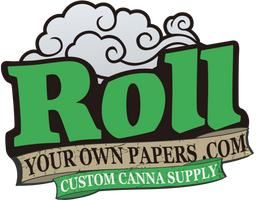
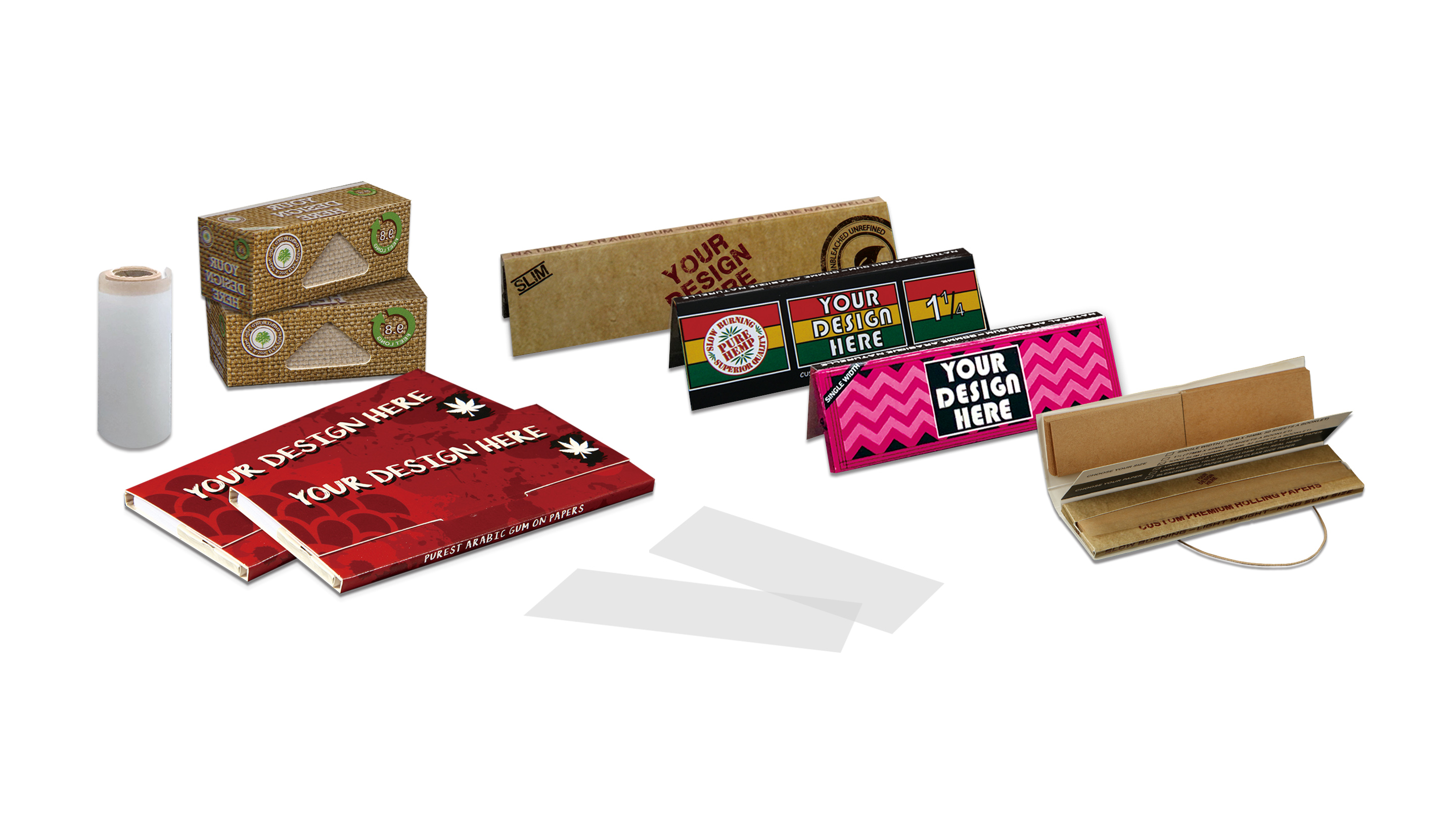

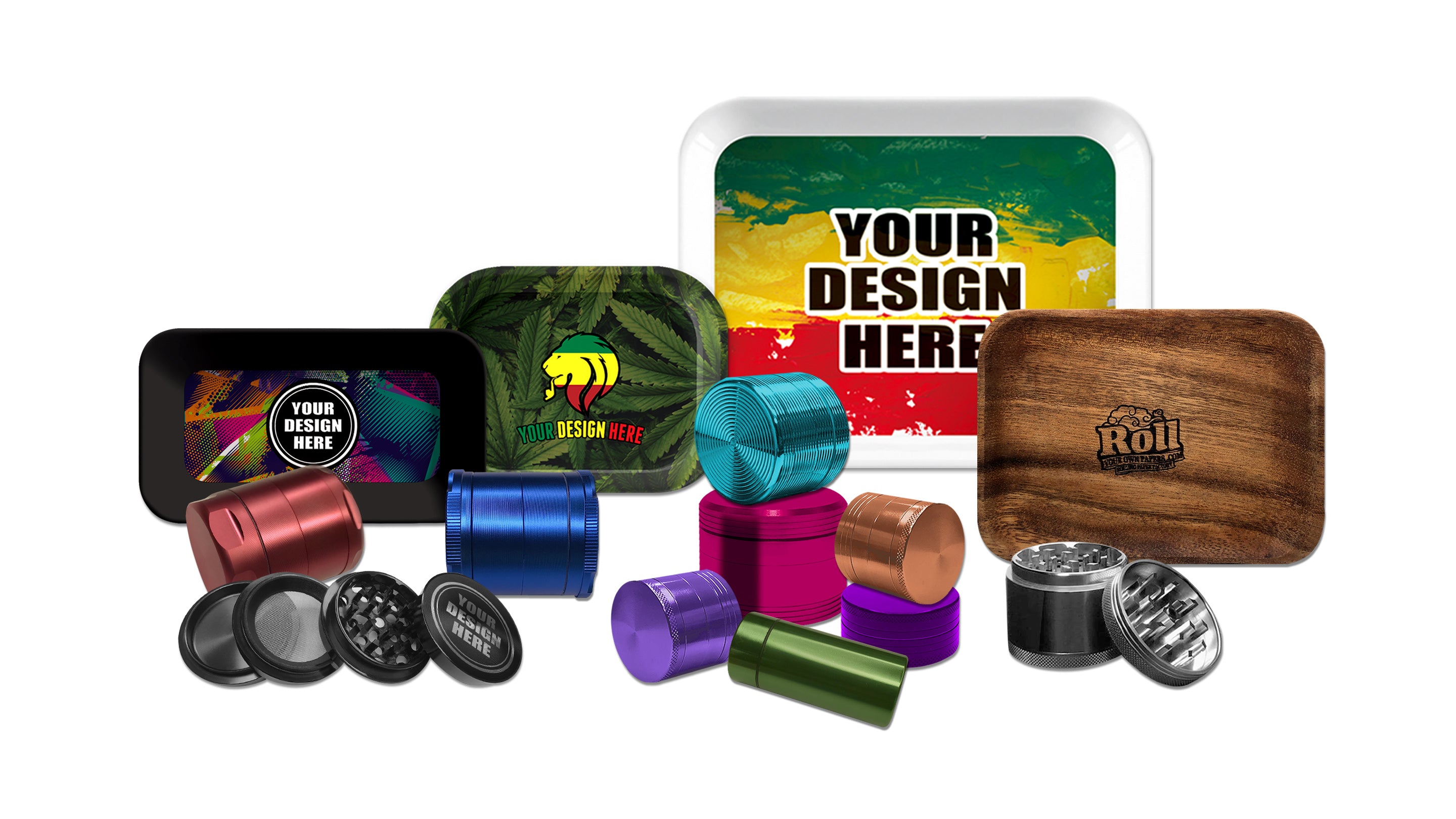
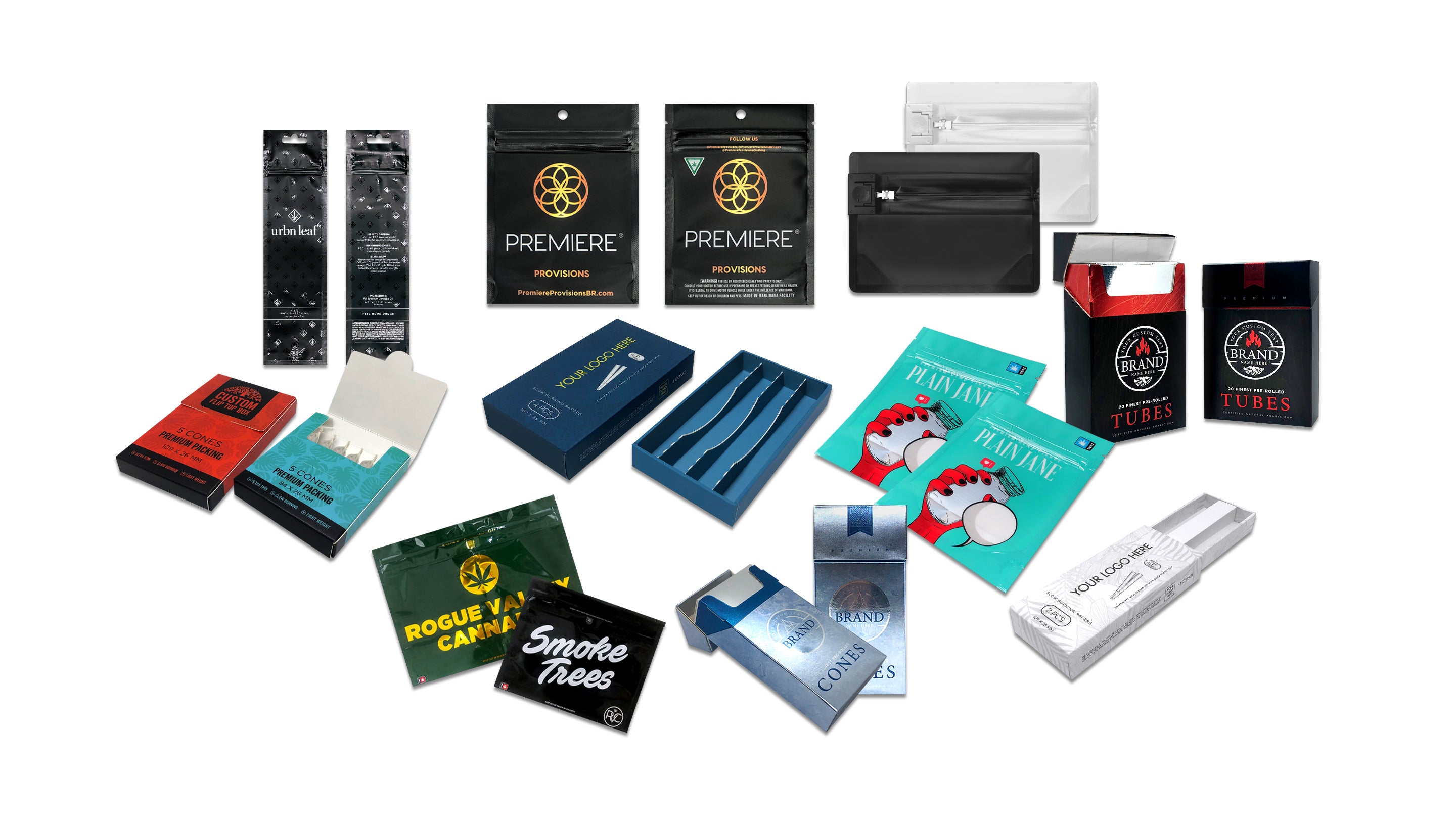
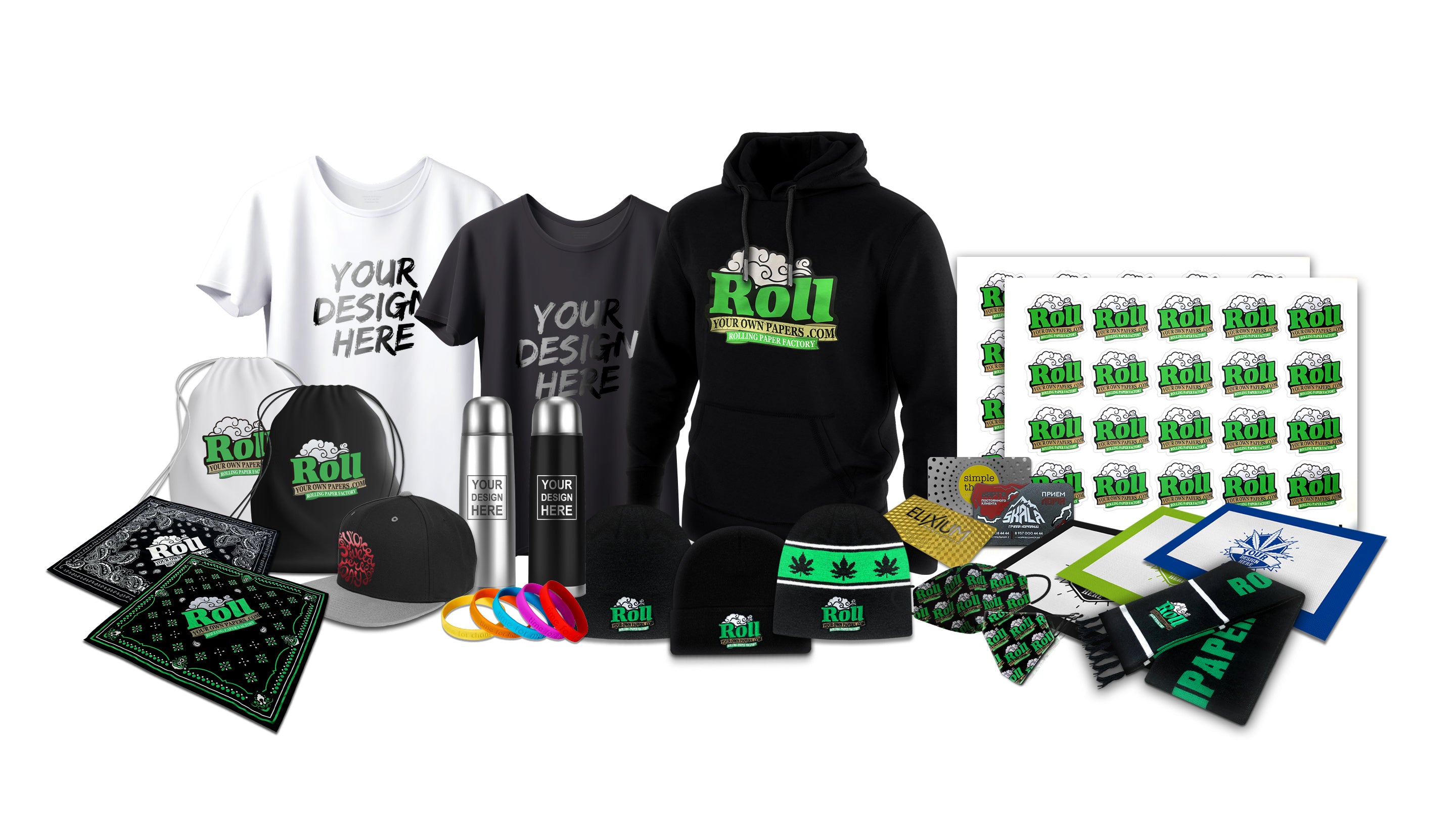
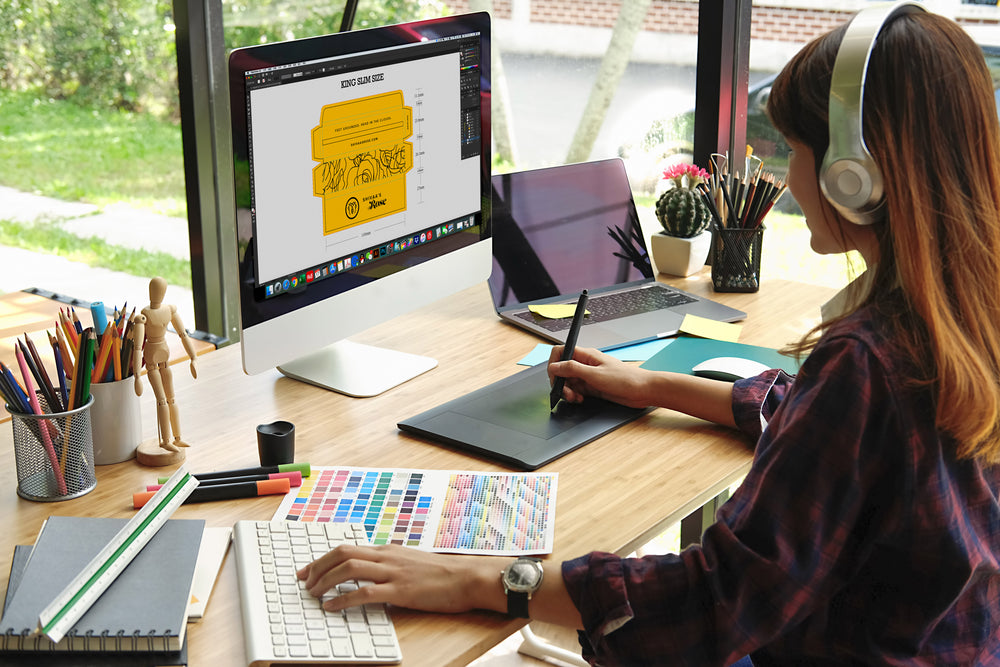




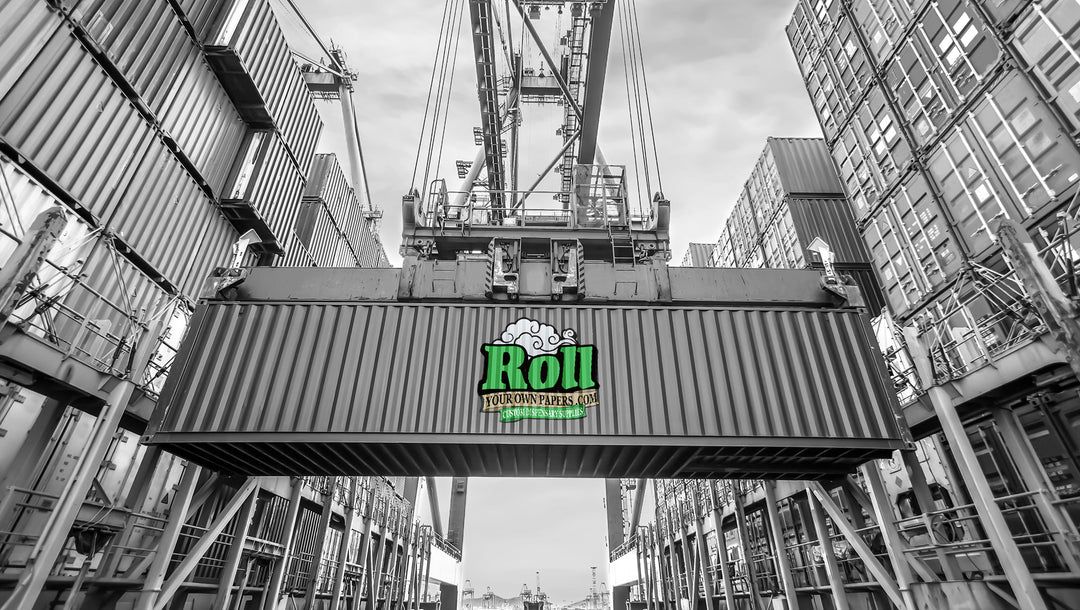
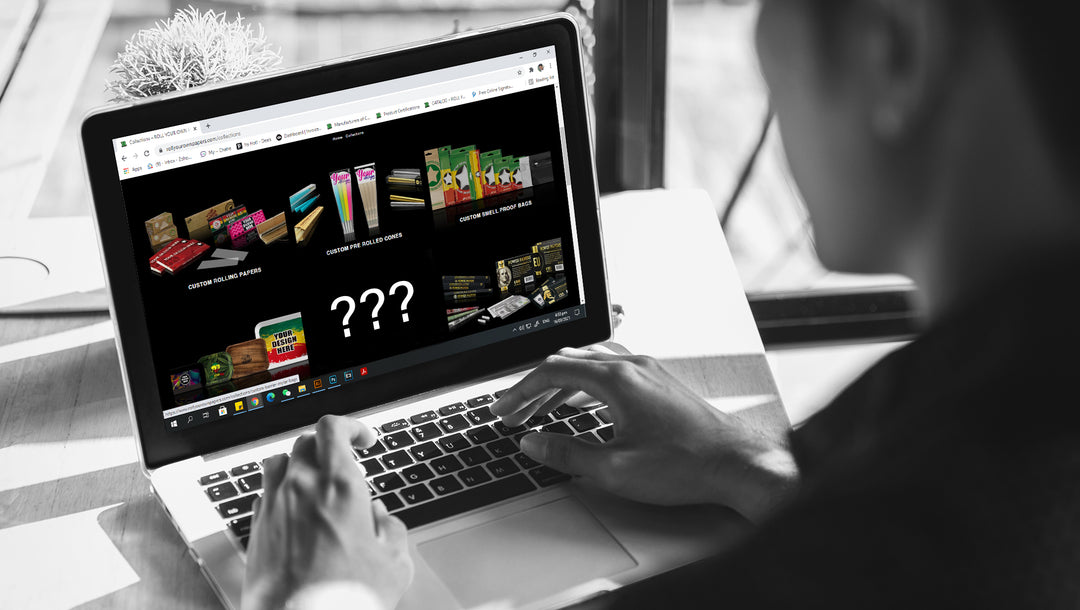
Leave a comment